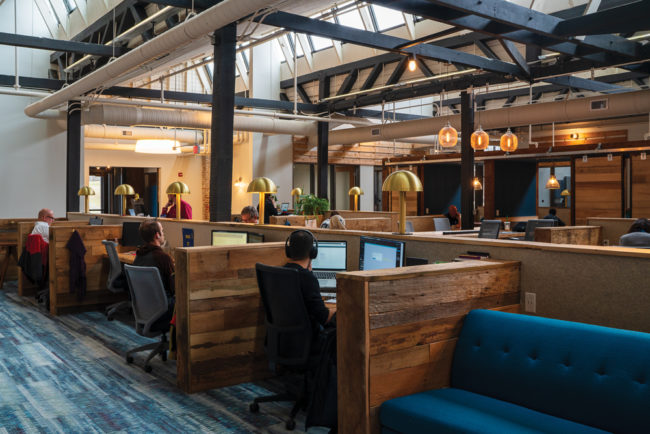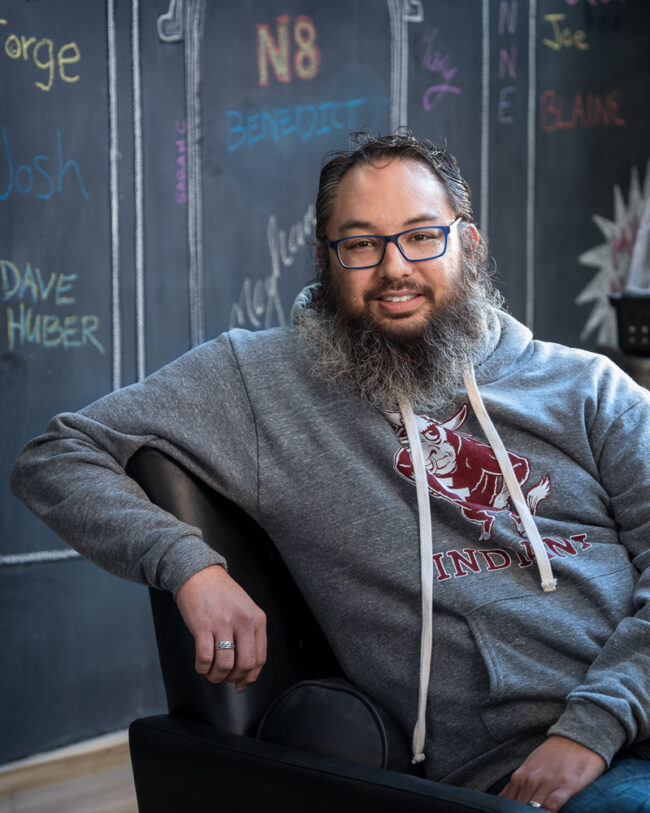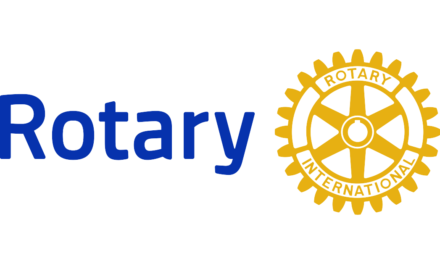
Editor’s note: The following is a press release from The Mill. Bloom has republished it here with edits for style and clarity.
The Mill, Bloomington’s nonprofit center for entrepreneurship and coworking, has announced that its Bloomington Remote program is working to entice remote workers to relocate to Bloomington. After eight weeks, the program has received over 150 applications from people in 39 states and 29 countries—even without offering a cash incentive. Several candidates have visited Bloomington, and four have accepted offers.
“The early results from our pilot program show that what’s most important to remote workers is finding a great community and high quality of life,” says Melissa Ward, head of initiatives and partnerships for The Mill. “The coworking and startup membership at The Mill makes it easy to quickly connect and become part of a creative, welcoming community.”
Launched in June 2021 and sponsored by Velocities, the Bloomington Remote program offers free lifetime coworking membership to The Mill and local onboarding support to entice remote workers to move to Bloomington. Century 21 Global Mobility, in an exclusive partnership, is providing extensive relocation and real estate services to support participants.

“Several cities and regions in Indiana are developing or already offer programs to attract remote workers as part of their economic development initiatives,” says Pat East, executive director of The Mill. “We think Bloomington can be a leader for the state in talent attraction.” The Bloomington program is unusual in that it does not offer a cash incentive, but instead leverages the city’s high quality of life to entice people to relocate.
Tulsa sparked the trend to attract remote workers in 2018. Tulsa Remote offered $10,000 in cash as part of their package, and in the first year, they received 30,000 applications from all over the globe for about 300 slots. Post-pandemic, the movement has grown as remote workers relocate to places with lower cost of living and more relaxed quality of life than traditional tech hubs. Today, cities all over the U.S. are offering incentives to attract remote workers. Remote workers earn an average salary of $91,000 and contribute an average of $11,000 to the local tax base and $50,000 in consumer spending in the first year of relocation. Remote workers increase a community’s talent pool and make it attractive to other remote workers and their employers.
“If we want more and better jobs in Bloomington,” East says, “we need to make our talent pool irresistible to the employers of the future. Bloomington already has the most highly educated population in Indiana, and fortunately, workers with only a high school diploma also earn more when they work for tech companies. Indiana’s reputation in tech circles is growing, but we need many more jobs in this high-paying sector.”
The Mill is using the Bloomington Remote pilot to test and refine the incentives and supports that will be most effective at attracting and onboarding new residents. Once The Mill meets its benchmarks for success, the City of Bloomington has committed funds to help expand the program. The Mill worked with Aaron Bolzle, creator of Tulsa’s groundbreaking remote worker program, to design Bloomington’s offer. The program is promoted through its website, PR, social media, and through MakeMyMove.com.
Applicants to the program don’t necessarily have Bloomington connections. Only about a third of applicants have been to Bloomington (as a native, as a college student, or as a visitor). Roughly another third have been to Indiana, but not to Bloomington, and the remaining third have never been to Indiana at all.
Two of the program’s first accepted applicants, Pablo and Sarah, are a married couple who both work remotely in Texas. Pablo is an experienced entrepreneur whose current startup is a custom AI-powered geospatial application that employs 15 remote workers. Sarah is a freelance graphic designer who specializes in user interface and web design. They are familiar with Bloomington and are looking forward to taking full advantage of living in a college town where they are close to family and can connect with people who have similar career interests.
“Of course, this program has great tax benefits for our city,” East says. “But what we’re really excited about is new energy and new ideas these new residents will bring to our community.”












